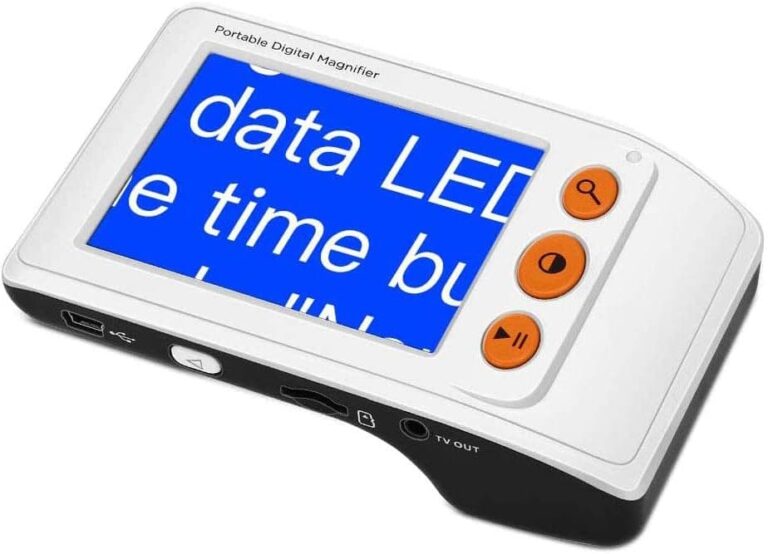How Much Does Medicare Pay For A Rollator?
Getting around can be difficult for seniors. Whether you are struggling with balance, have weakness in the upper body, or are simply tired of lifting, a rollator can help you continue to live your life as independently as possible. But how much does Medicare pay for a rollator?
Medicare will typically pay 80% of the cost of a rollator. This means that the remaining 20% is the responsibility of the beneficiary. You will need to have the prescription from your doctor, purchase the rollator from a supplier that accepts Medicare payments and follow certain guidelines.

If you want to know more about buying a rollator with Medicare aid, continue reading. For those residing in specific regions, such as Florida, understanding your local options can further assist in managing out-of-pocket expenses. Exploring Medicare insurance options in Orlando could provide additional insights and assistance tailored to your specific regional needs.
Which Rollators Are Covered by Medicare?
The types of rollators that are covered include wheeled walkers, heavy duty walkers, and specific models with features such as hand operated brakes or adjustable height. However, enhancement accessories of walkers, such as style or color enhancements, are not covered by Medicare.
Medicare covers rollators, also known as wheeled walkers, under the Durable Medical Equipment benefit, as long as they meet the reasonable and necessary requirements set out in the related Local Coverage Determination.
Different types of rollators are covered under different Healthcare Common Procedure Coding System (HCPCS) codes.
A standard wheeled walker, which may have 2, 3, or 4 wheels, may be fixed height or adjustable height, and may or may not include glide-type brakes, is covered under codes E0141, E0143, or E0149.
A wheeled walker with a frame that completely surrounds the beneficiary and has an attached seat in the back falls under code E0144.
Heavy duty walkers, which are capable of supporting beneficiaries who weigh more than 300 pounds, are covered under codes E0148 and E0149.
A specific type of 4-wheeled walker, which supports beneficiaries who weigh more than 350 pounds and features hand-operated brakes and an additional braking mechanism, is covered under code E0147. However, only products that have had a written coding verification review by the Pricing, Data Analysis and Coding (PDAC) Contractor and are listed on the Product Classification List (PCL) may be billed under E0147.
Certain rollators known as gait trainers are also covered. If a gait trainer has a feature described by one of the walker attachment codes (E0154, E0156, E0157), that code may be separately billed.
It should be noted that Medicare does not cover enhancement accessories of walkers, such as style, color, hand operated brakes (other than those described in code E0147), or basket. These are considered non-covered items and are billed under code A9270.
How Often Will Medicare Pay for a Walker?
How often Medicare will pay for a walker depends on the individual’s medical condition and the doctor’s prescription. If a walker is prescribed by a doctor and deemed necessary for the patient’s health, Medicare Part B may cover 80% of the approved cost after the yearly Part B deductible is met. The remaining 20% of the approved price is then owed by the patient.
It’s important to note that the walker should be obtained from a Medicare-enrolled provider for coverage to apply. In certain situations, the patient may need to rent a walker, while in others, they may need to buy one.
Medicare Supplement insurance plans and Medicare Advantage plans may also help cover the cost of a walker. These plans generally pay at least 50% of the Medicare Part B coinsurance for walkers, with most paying 100%. However, the exact coverage depends on the specific plan rules and may require the patient to pay a copay or some percentage of the cost.
In the case of a patient recovering from a hip replacement, a walker may be considered medically necessary, and thus, covered by Medicare. However, the necessity and frequency of walker replacement will ultimately be determined by the prescribing doctor’s assessment of the patient’s condition.
Eligibility Requirements for a Rollator Paid For by Medicare
Whether you are looking for a rollator or you are looking for a walker that is paid for by Medicare, there are several requirements that you will need to meet. If you meet the requirements, you will get Medicare aid to pay for the rollator.
The Rollator Must Be Considered Medically Necessary
Purchasing a rollator is a great way to help you remain mobile. These are often used by older adults to avoid falls and increase their independence.
Medicare pays for some of the cost of a rollator when it is prescribed by your doctor.
However, you must meet certain eligibility requirements to qualify for this coverage. If you are eligible, you can purchase a rollator through Medicare.
The most important part of eligibility for a rollator is determining your need for the product. In order for you to be eligible, the rollator must be considered medically necessary. Medicare will only pay for the rollator if it is absolutely necessary for your condition.
The Rollator Must Be Prescribed By A Doctor
The best way to find out if a rollator is covered by Medicare is to contact your healthcare provider. They will be able to help you find a supplier in your area.
Medicare covers a wide variety of healthcare services, including walkers and rollators. This coverage is offered under Part B, which is also known as medical insurance.
To qualify for this coverage, the rollator must be prescribed by a doctor. A doctor’s prescription is absolutely necessary. If you don’t have it, you won’t get any help.
The Doctor And The Supplier Must Accept Medicare
Getting Medicare to cover your rollator’s costs requires a bit of forethought. The good news is that you can count on your health insurer to cover the majority of the costs, but you will be required to pay out of pocket for about twenty percent of the total cost.
For a walker to be covered by Medicare, it must meet certain requirements. The first is that it must be medically necessary. The second is that it must be prescribed by a doctor who accepts Medicare.
And the last one is that the doctor and the supplies must accept Medicare. If you decide that you want to purchase a rollator, Medicare will help you find a good supplier.
Will Medicare Cover the Full Costs of Rollators?
Using rollators to help with mobility is a great way for seniors to stay active. They can be pushed along instead of carried and help keep people safe while walking. Rollators can also help seniors get around the house.
Depending on your health condition, you may be able to get a rollator or wheelchair covered by Medicare. To get this coverage, you must first be enrolled in Medicare Part B. Then, you can visit your physician and get a prescription for the rollator or wheelchair. After the prescription is obtained, you will need to find a supplier that accepts Medicare payments. You may also want to look into a supplemental insurance policy.
The cost of a rollator can range from $100 to $400. In addition to the cost of the equipment, you will also be responsible for the deductible. Medicare pays for 80% of the cost of durable medical equipment, and the remaining 20% of the cost is the patient’s responsibility.
Medicare coverage of rollators may not be as extensive as other medical equipment, but they are still covered. This is because rollators are considered medically necessary equipment. It is also the most expensive piece of equipment that Medicare will cover.
For Medicare to cover the rollator, you will need to visit your doctor, get a prescription for the rollator, and purchase or rent it from a supplier that accepts Medicare payments. The Medicare website provides a list of approved suppliers.
The Difference between Rollators and Walkers
Depending on your situation, you may find that a walker or a rollator is the right walking aid for you. However, before you invest in any type of mobility aid, it is important to know which one will best fit your needs.
A walker is a walking aid that is used to provide stability, support, and the ability to transfer weight from one leg to the other. It is an ideal solution for patients recovering from a hip replacement or knee surgery. It can also be a useful tool for those who have weak legs.
A rollator is an ambulatory aid with a similar structure. It is designed to provide support over longer distances and is useful for those who need frequent rest. It is often large, heavy, and requires some manual handling. It is useful for indoor and outdoor use on rough or uneven surfaces. However, it does not offer the same level of support as a walker.
A rollator is typically larger than a walker and can be pushed around. However, it is more stable and easier to steer than a walker. It is also easier to maneuver in small spaces.
A rollator is a good choice for elderly patients who need support. Rollators are also useful for patients recovering from hip replacement or knee surgery. Often, patients progress to a rollator as they become stronger. A rollator can be found as an adult and youth model. Some rollators also have a storage compartment.
Is It Worth It to Get a Rollator Through Medicare?
Purchasing a rollator through Medicare can be a great way to help older person maintain their independence. These rolling walkers are designed to make daily tasks easier. They have wheels at the bottom of the legs and are usually accompanied by a seat. This allows the user to rest while using the rollator.
There are several different types of rollators available, and they come with different features. Some have large indoor wheels, while others have smaller wheels for outdoor use. Some rollators fold up to save space when not in use. Some also have storage baskets. They can also be purchased through Medicare savings programs.
Rollators are medically necessary, and Medicare covers them if ordered by a physician. However, the supplier of the medical equipment must accept the Medicare assignment. Some manufacturers offer financing options. If a rollator is purchased through Medicare, the beneficiary is responsible for the remaining 20% of the cost.
Conclusion
Medicare Part B covers medically necessary supplies, medical equipment, and outpatient services. Part B also covers medically necessary supplies such as wheelchairs, walkers, and other durable medical equipment (DME). If a rollator is needed, Medicare may pay for the device if it is medically necessary.
However, Medicare will only pay up to 80% of the cost. The rest 20% needs to be paid by the beneficiary.
Frequently Asked Question
-
How Much Does Medicare pay for a rollator?
Medicare covers 80% in most cases. Check your supplement insurance policy to see if your plan will pay for any Medicare-related expenses. Medicare covers regular and rollator-type walkers.
-
What do elderly want most?
Mobility assistance is often a top priority when it comes to senior citizens’ most needed services. Mobility issues must be addressed as a top priority to ensure seniors are safe, whether they need help with moving about on an outing or inside their home.
-
Does Medicare pay for a rollator?
Rollators are covered by Medicare as long as the equipment is medically necessary and prescribed by a physician. The supplier and doctor must also accept Medicare assignment. Rollators can be used as durable medical equipment, just like walking aids.
-
What do you give a new mom in the hospital?
You can add things like painkillers and large pads, but also beautiful socks and a candle. These are just a few things you should consider including in your postpartum recovery bag.
-
Will moving a person with dementia make it worse?
Moving a person living with dementia should be done at the time when they are at their most alert. Anyone can feel anxious about moving.
-
What is the average time a person lives in a nursing home?
According to the National Care Planning Council, an average length of stay at a nursing home in the United States is 835 days. The average length of stay at a nursing home for residents who are discharged, which also includes people who were treated with short-term rehabilitation care, is 270 days or 8.9 month.
-
What do old people like to do?
One study found that four out of five top activities cited as their favorite by senior citizens are very active. These include running, walking, gardening, yard work and playing other sports.
-
What is F Tag 248?
F248 (or FTag 248): Federal regulation that regulates residents in long-term care and nursing homes. All activity professionals need to understand F248.
-
Why walkers should not be used?
Because baby walkers move so fast, they are unsafe. When your baby stands upright, a baby walker will make it easier for them to reach places they don’t normally have. Falling down stairs or steps could pose a danger.
-
How often should you visit someone with dementia?
Remind your friend or loved one that someone has already visited. Shorten your visits. A person suffering from dementia will often forget if they have visited for 5 minutes or 5 hours. It is better to go three times per week, for 20 minutes, than one hour each week.






